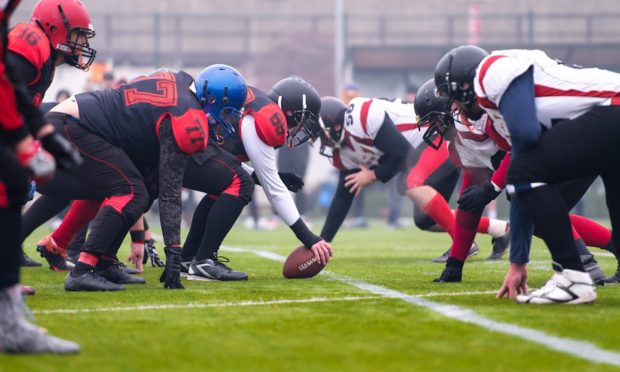Patchwork NIL Rules Leave Many Brands Sitting on Sidelines

For decades, college athletes were barred from profiting from their name, image or likeness (NIL) by rules imposed by the NCAA despite many becoming household names and moving onto professional teams. But an interim policy change over the summer opened the door for students to start getting paid by companies looking for their seal of approval.
Peter Schoenthal, CEO of compliance software firm Athliance, said in a conversation with PYMNTS that the change in NCAA rules and legislation “is huge for brands,” as it opens the doors to approximately 500,000 “ambassadors” and spokespeople that were inaccessible before.
“College athletes across the nation have been known as household names while they’re in school and while they’re performing, but for so long, you couldn’t do anything with them if you’re a brand,” Schoenthal said. “Now, you can.”
It’s also big, he said, because brands can also partner with college athletes who may not be famous for their athletics, but nonetheless have a large reach on social media with their personal brands, such as the Cavinder Twins at Fresno State, who have 3.6 million followers on TikTok.
See also: Commerce Is Fast Becoming the New Battleground for Social Media Giants
The reason some of the biggest brands haven’t jumped at the opportunity is because of how complex the current legal landscape is. The NCAA’s rules are “very bare-bones,” Schoenthal said, noting that student-athletes can only be paid for their name, image or likeness, not their performance. The college athletics body also stipulates that state law must be followed if it exists; otherwise, universities must have reasonable policies and procedures in place.
“So, if I’m a brand and I want to work with student-athletes, I’m dealing with about 30 states that have legislation, and they’re all different and I have to know all of them so that I’m not breaking any of those rules,” he explained. “And then for the states that don’t have legislation, there are 20, 30 universities per state, and I need to know all of their rules and policies and procedures. So, it’s all over the place.”
Earlier this week, Congress held hearings to decide whether they should step in and create a federal framework for student athletes’ endorsements, something even the NCAA says is an “urgent” need.
“While it has been exciting for me and others to see college athletes explore new financial options in recent months, we’re also seeing many challenges and concerning trends,” NCAA President Mark Emmert told the House Subcommittee on Consumer Protection and Commerce. “These concerns, if not addressed soon, may be very difficult to reverse.”
Schoenthal predicted that the NCAA may also step up and have a more restrictive, uniform law across the board at some point — but whether direction comes from the federal government or the National Collegiate Athletic Association, brands will likely sit on the sidelines until things are more clear.
“Once there is uniformity and more certainty in the legislation, I think you’ll see more companies and brands feel comfortable engaging with student-athletes, knowing they’re not going to negatively impact student-athletes and their own brand,” Schoenthal said.
SMBs in the Driver’s Seat
In some ways, the college athlete endorsement market will likely end up looking similar to that of professional athletes, Schoenthal said — especially with the national-scale and big-name athletes who may end up working with larger brands.
“In fact, right now, I would argue you have a bigger return on your investment working with college athletes because every time someone runs an ad with a college athlete, someone’s writing an article about it — it’s all over Twitter, it’s big news, and it’s a feel-good story,” he said.
But the NIL rules also open the door for small and medium-sized businesses (SMBs) to capitalize on athletic endorsements on a local level. Professional athletes would never take offers for $250 or $500, Schoenthal said, but for students, “it makes a huge difference.”
“It’s the micro-influencing and the micro-opportunities that are really driving the space,” he said. “It’s very much different than professional athletes, but it’s amazing to see what’s happening.”
Related news: Behold the ‘Micro-Influencer’ — The Trusted, Unsung Work Horse of Social Commerce
Keith Nealon, CEO of Bazaarvoice, told PYMNTS in a recent interview that friends, family, peers and wider networks are among the most trusted sources of authentic content on social media, and 56% of consumers say the everyday social media user has become the preferred influencer to follow.
“This presents brands with a huge opportunity to utilize UGC (user-generated content) throughout their marketing efforts, giving them access to unofficial ambassadors that are authentic and trusted by their followers and customers,” Nealon said.
Readers also liked: After a Year in Survival Mode, SMBs Are Now Getting Social
